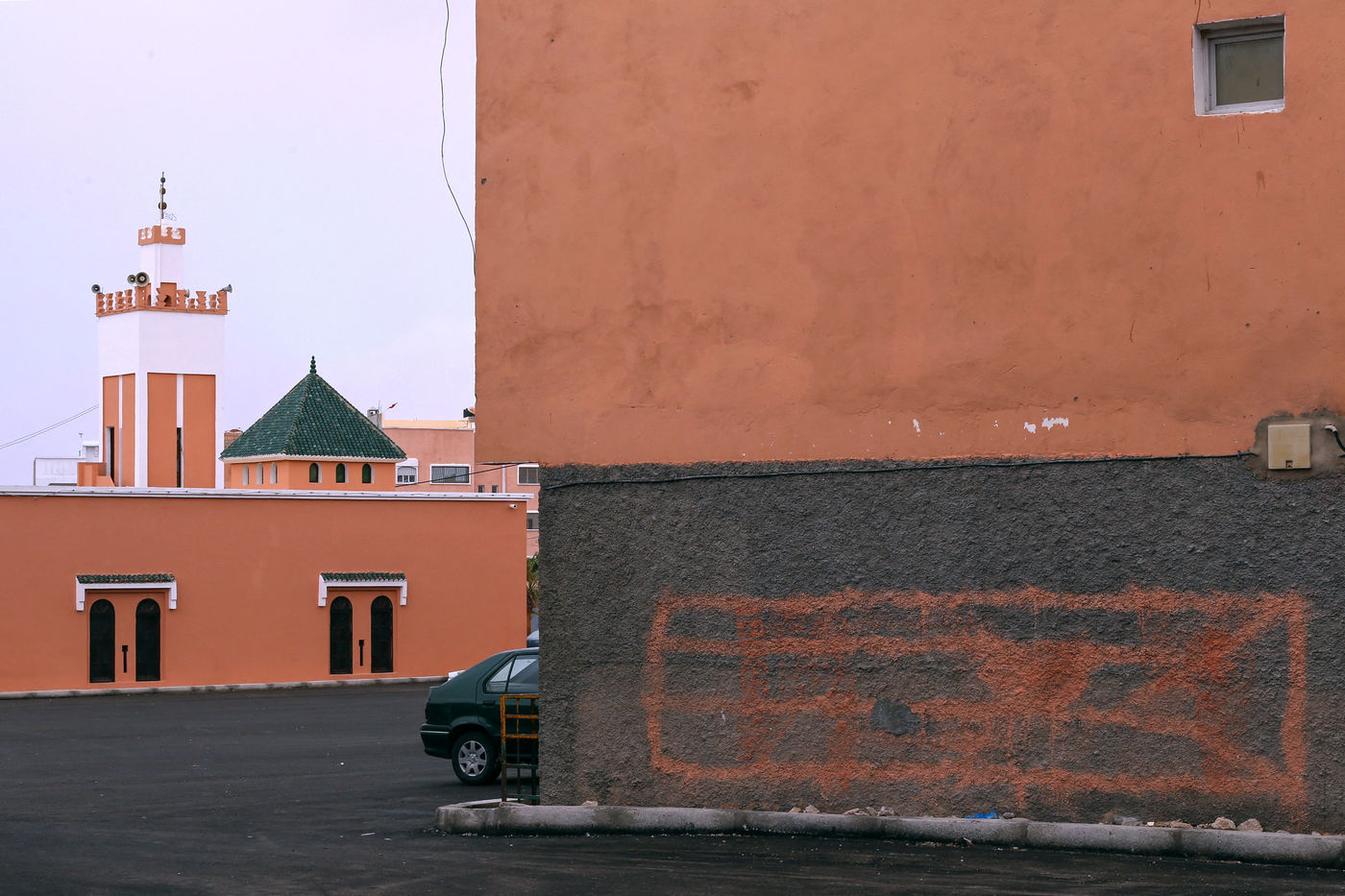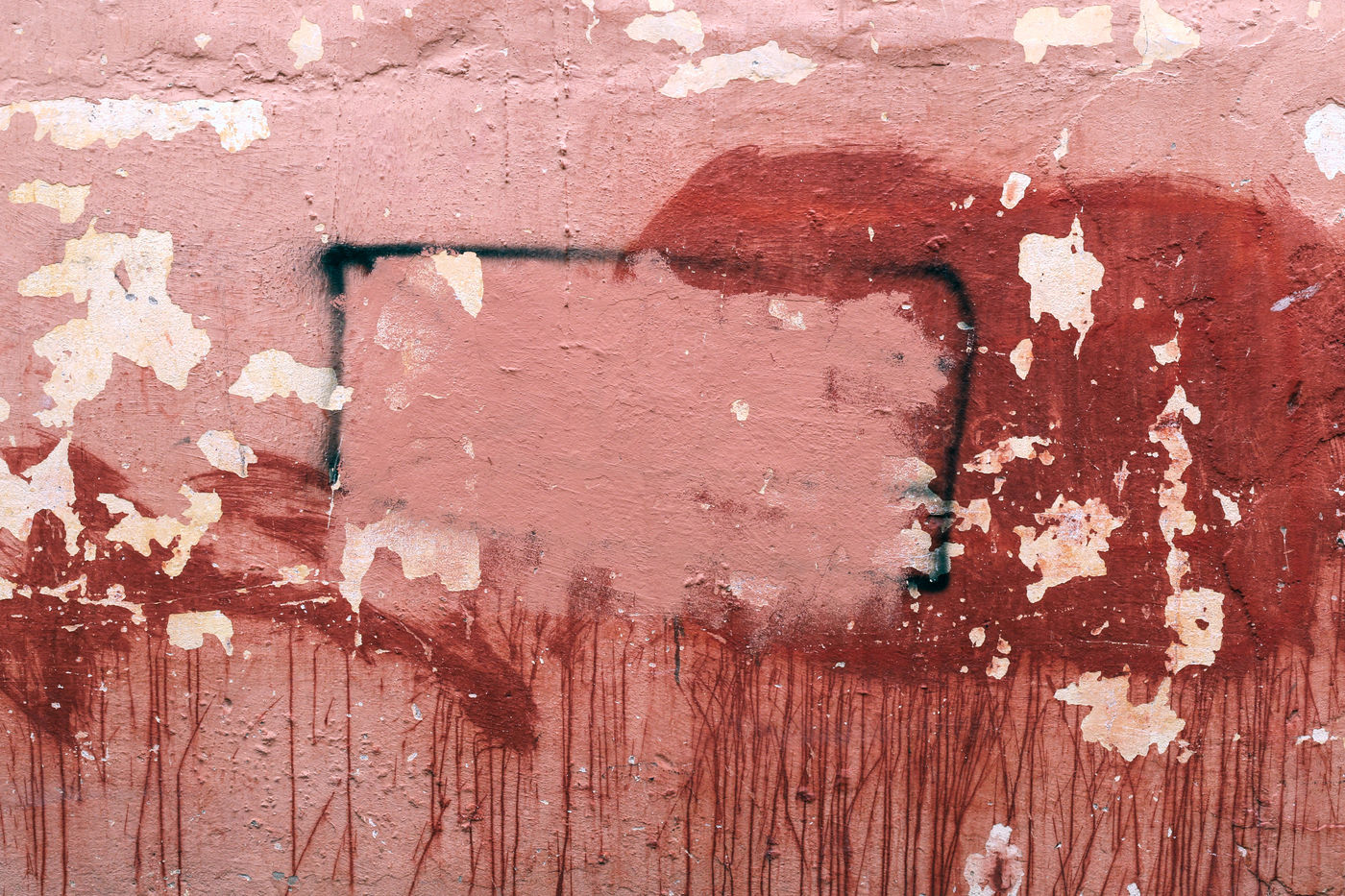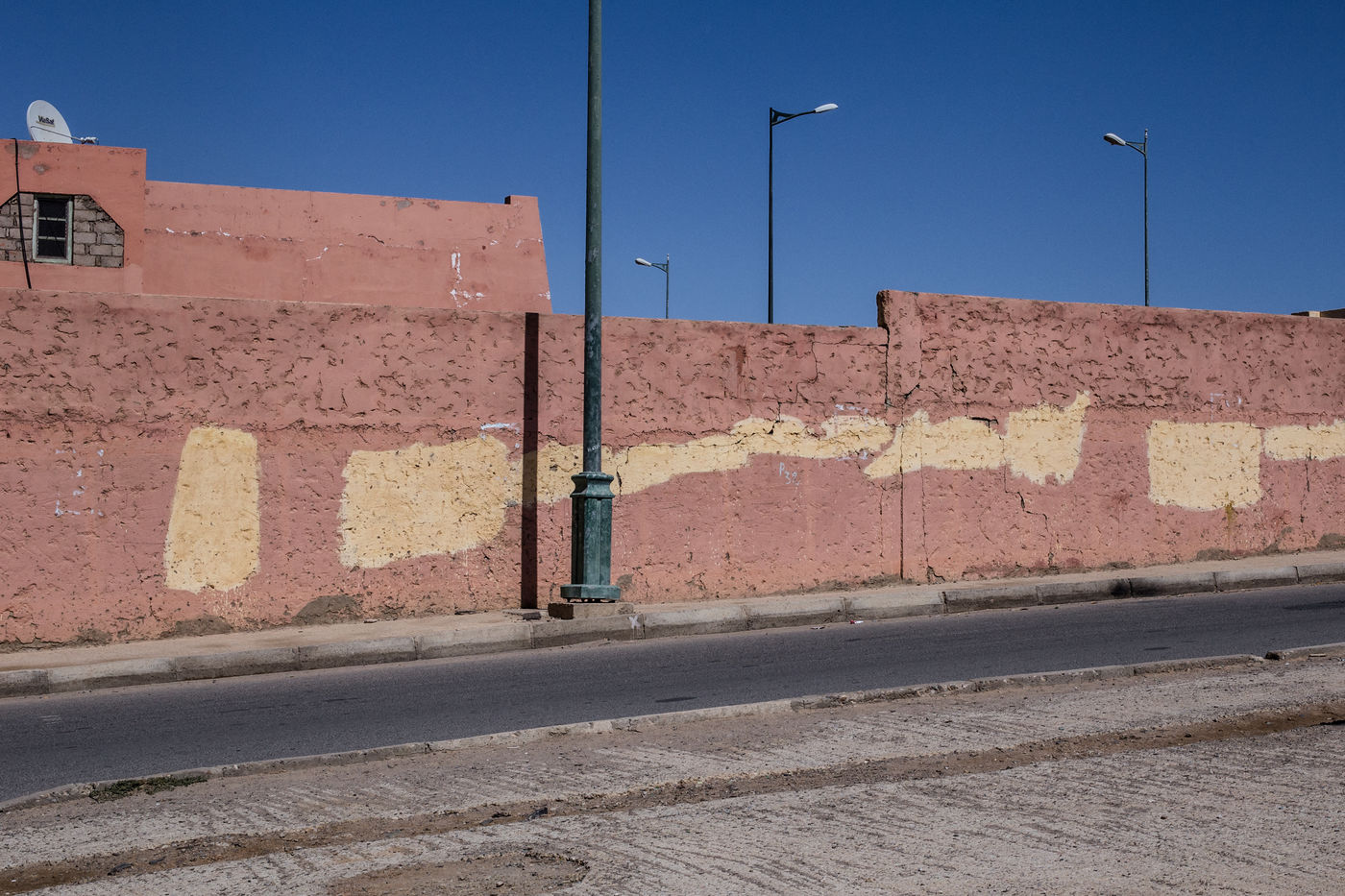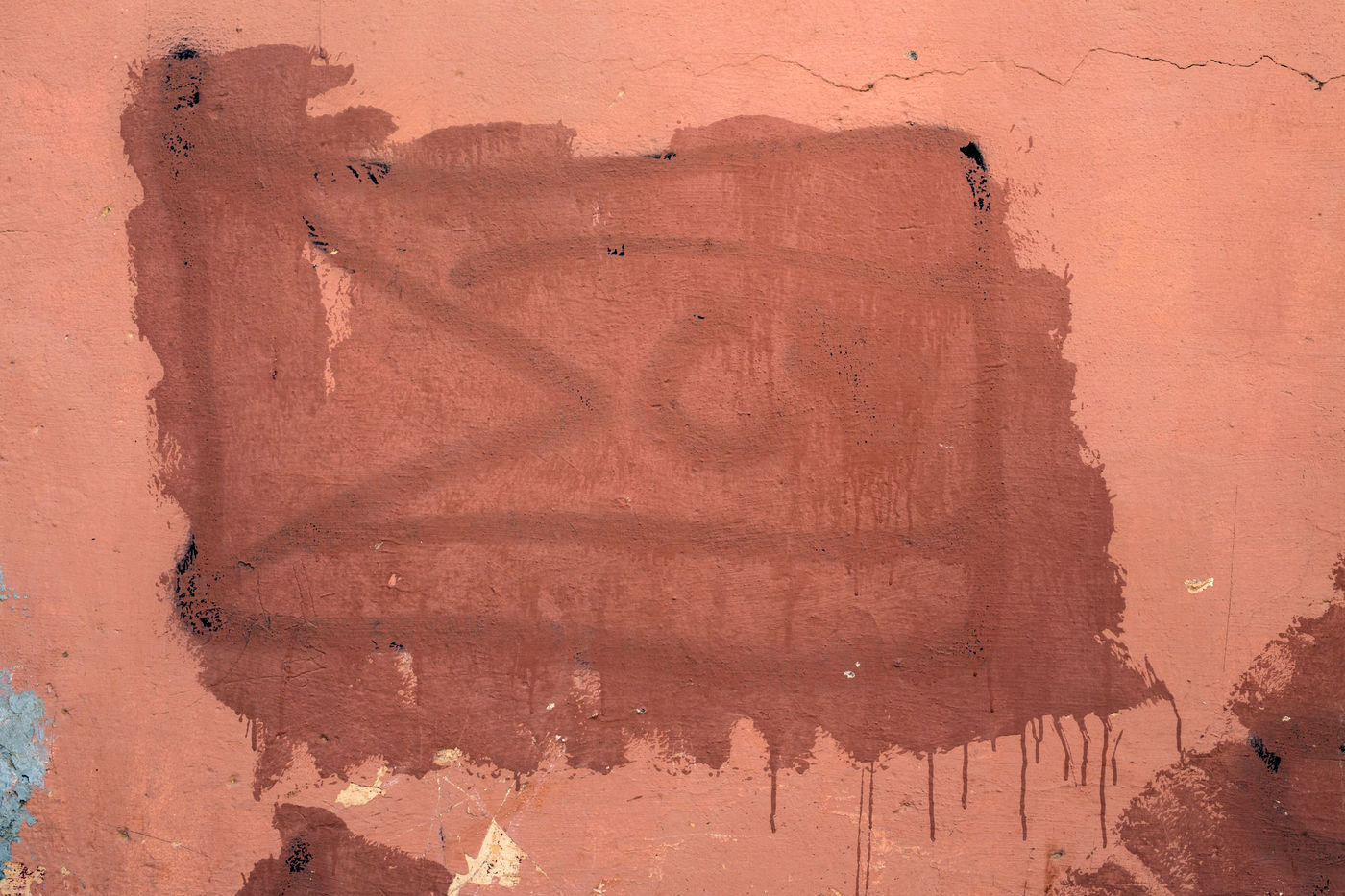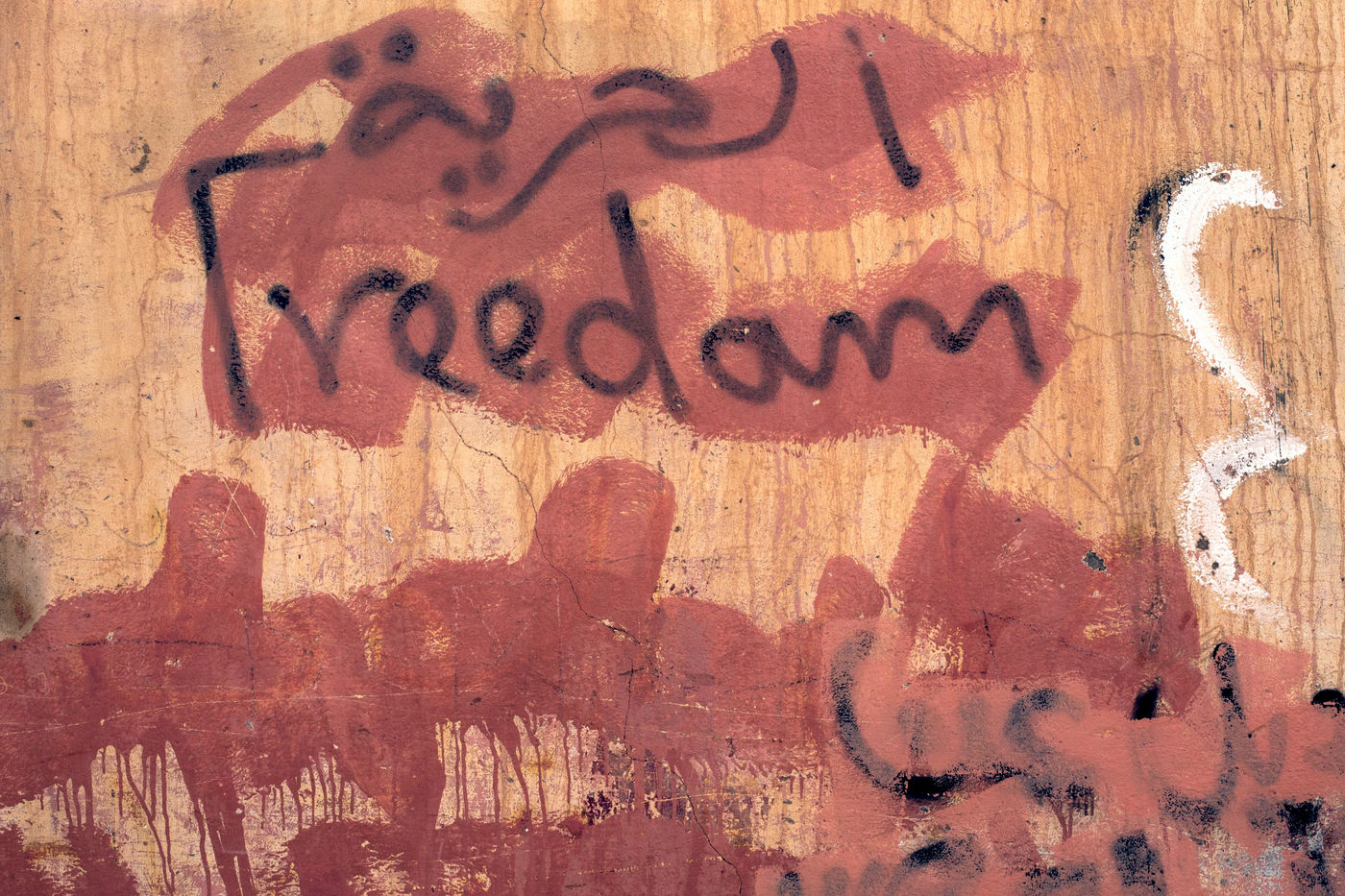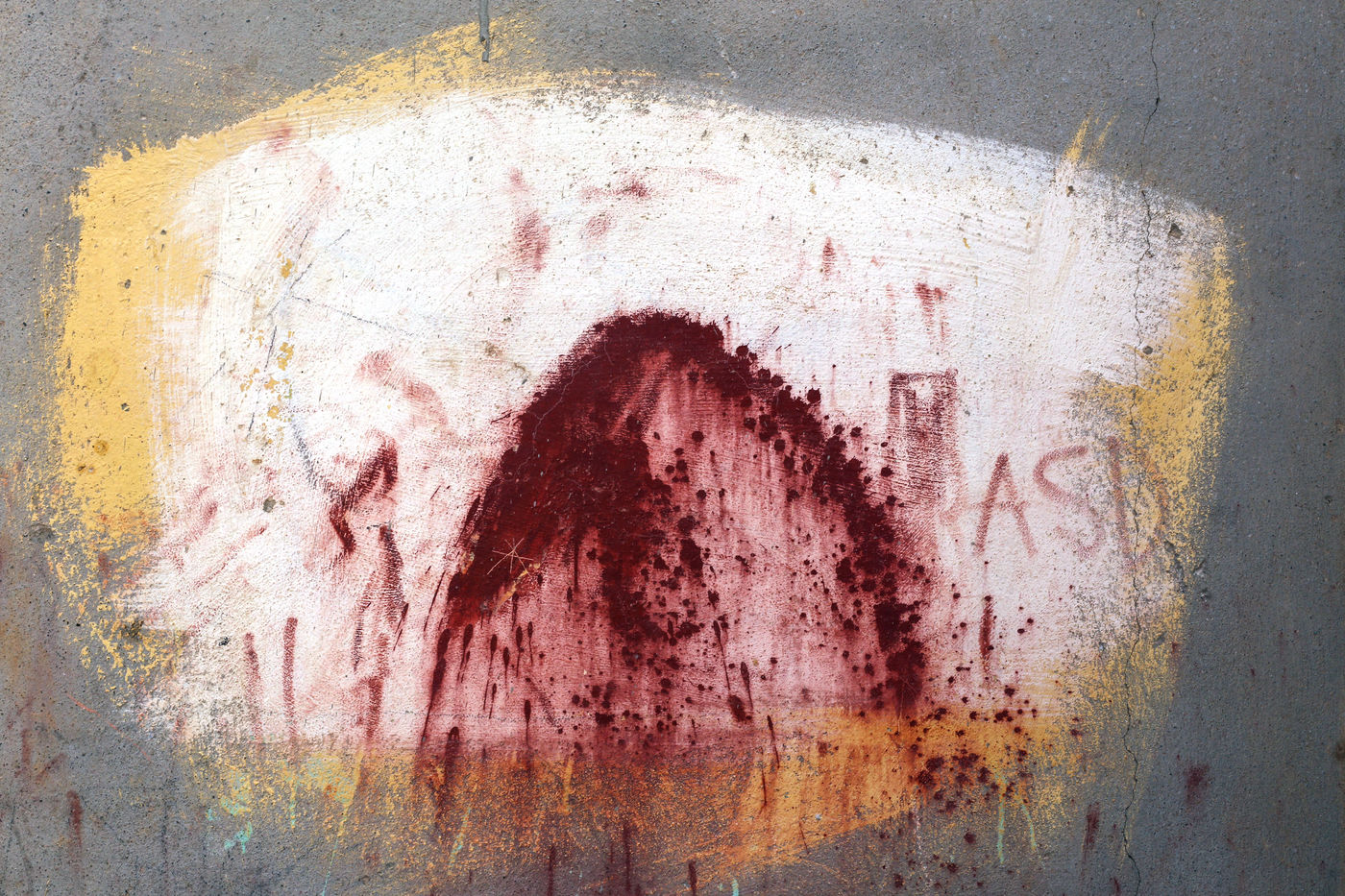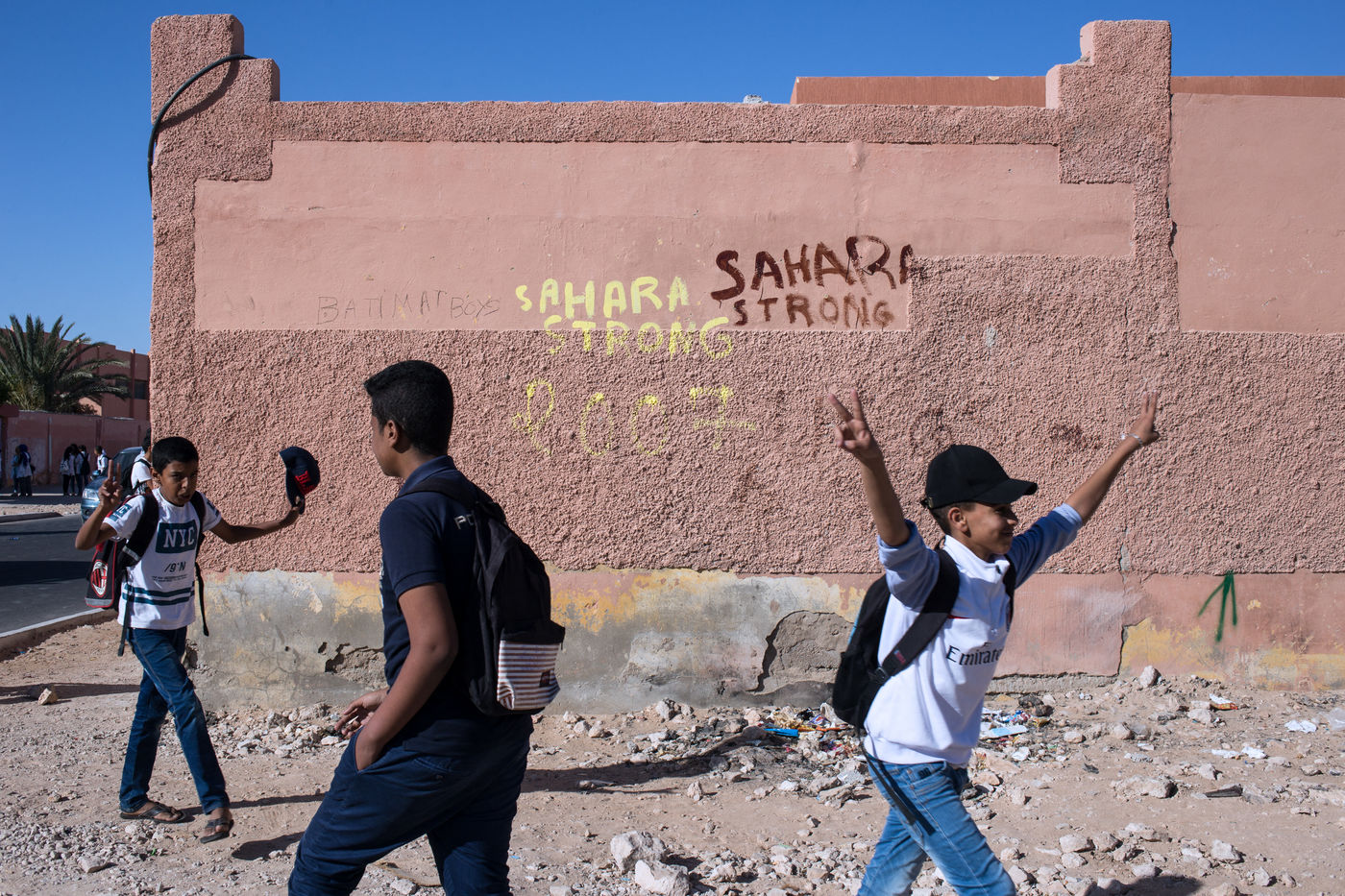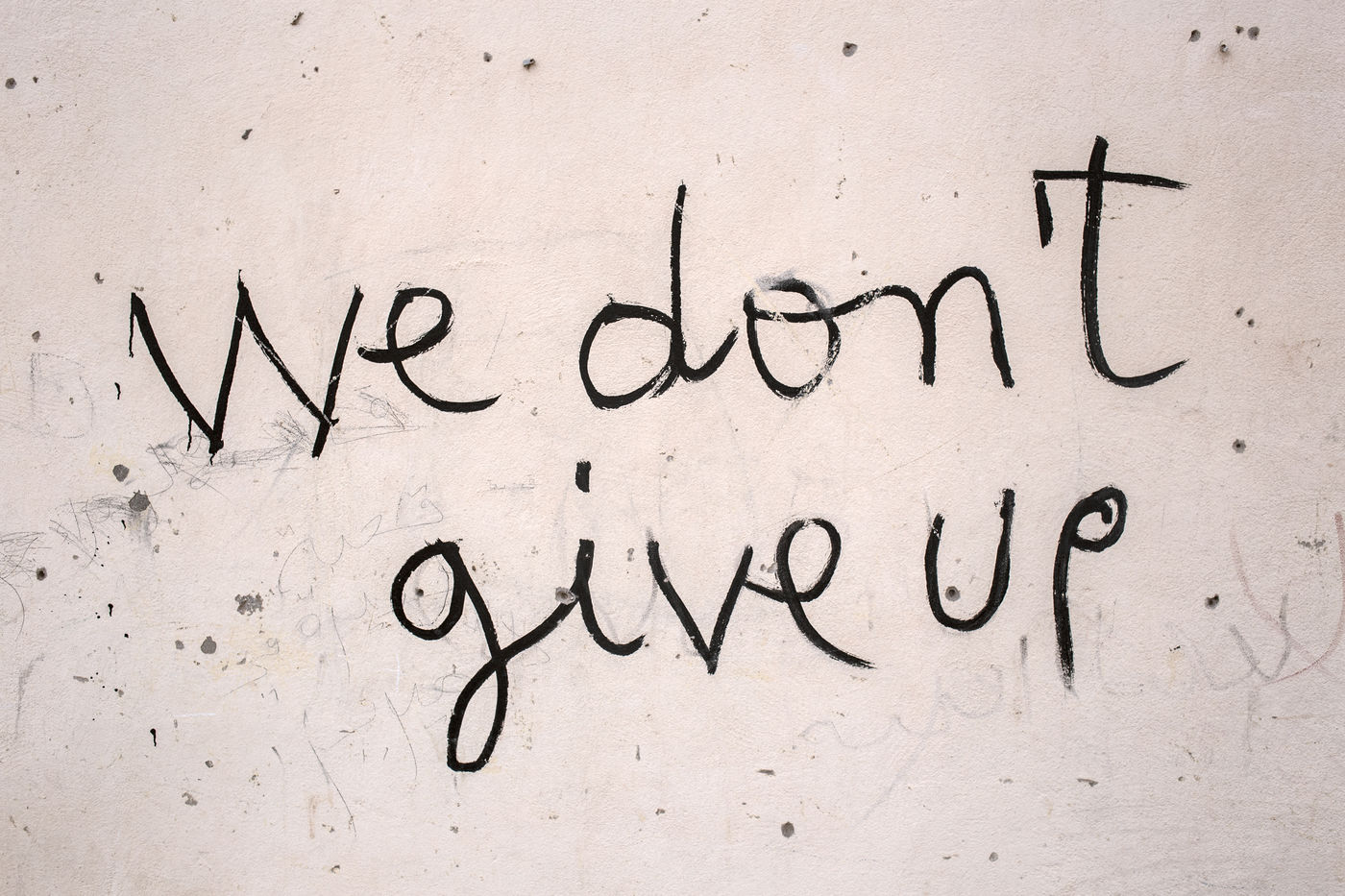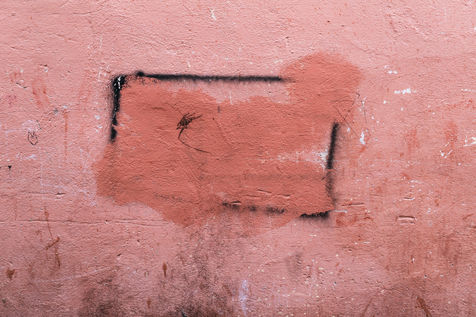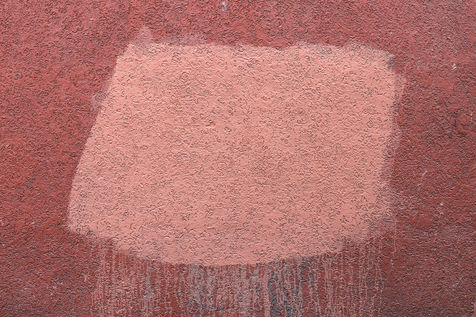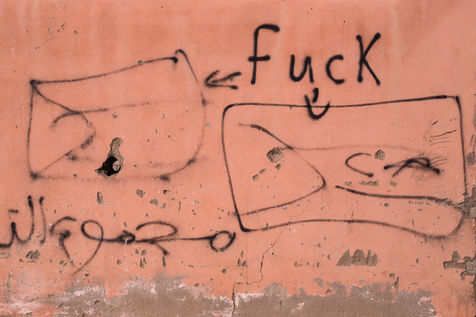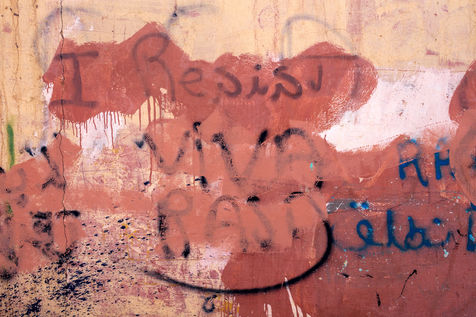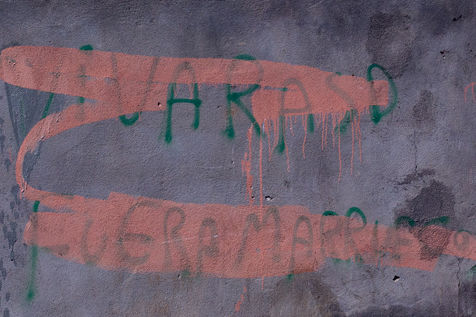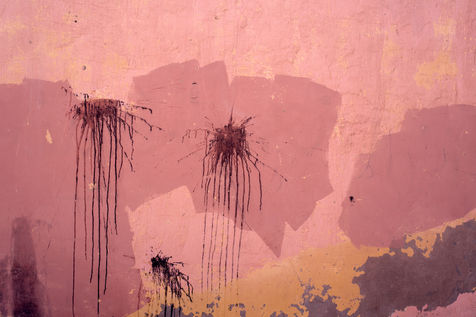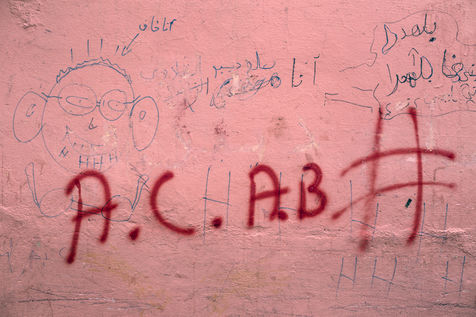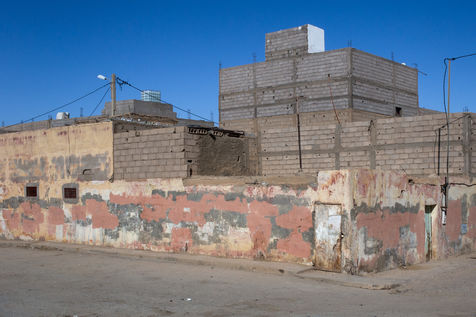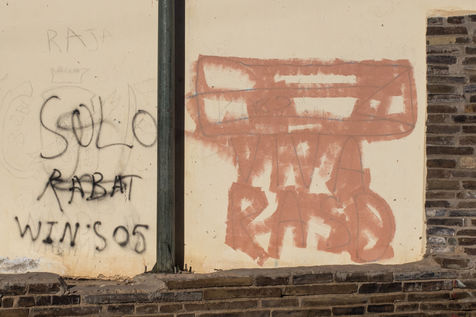Graffitis politiques au Sahara Occidental
En résistance à l'occupation illégale marocaine, les murs se couvrent quotidiennement de revendications indépendantistes.
Graffitis aussitôt censurés par la police et le voisinage. Couches sur couches, les murs sont maladroitement repeints.
Tels des palimpsestes, ils symbolisent la tentative d'invisibilisation d'une revendication pourtant inaliénable, le droit au référendum d'autodétermination, que l'ONU est missionnée d'organiser.
Piégés par le mur de séparation marocain, les villes colonisées ou ce désert quadrillé de zones militaires, le vandalisme est une manière pour certains activistes sahraouis de reprendre momentanément la main sur l'espace occupé.
Malgré les investissements colossaux du Maroc sur ce territoire, ces graffitis illustrent la difficulté que rencontre les autorités marocaines à intégrer la minorité sahraouie aux colons.
La surveillance des forces de sécurité marocaine est constante, les libertés d'expression et de réunion sont restreintes, l'activisme sahraoui sévèrement réprimé. Graffer est un acte risqué pour les sahraouis, car exprimer leurs droits c'est reconnaitre l'existence du Sahara Occidental en tant qu'entité distincte du Maroc, ce qui représente une infraction passible d'une peine d'emprisonnement pour « atteinte à la sécurité intérieure » du Maroc.
Mêlant revendications sociales et politiques, les graffitis sur les murs témoignent d'une marginalisation des sahraouis et de la privation de leurs droits.
Political graffitis in Western Sahara
In resistance to the Moroccan illegal occupation, pro independence messages daily cover the walls and are rapidly censured by the police and Moroccan settlers
Layers on layers, the walls are clumsily repainted.
Like palimpsests, they symbolize the Moroccan attempt to make their inalienable right (the referendum for self-determination, which the UN is commissioned to organize) invisible. For some Sahrawi, vandalism is a way to own back their land for a short moment.
Trapped by the Moroccan separation wall, the colonized cities or the desert controlled by military zones, vandalism is a way for some Sahrawi activists to temporarily own back the occupied space.
Despite the colossal investments of Morocco in this territory, these graffitis illustrate the difficulty encountered by the Moroccan authorities to integrate the Sahrawi minority to the settlers.
The surveillance of the Moroccan security forces is constant, the freedoms of expression and assembly are restricted, the Sahrawi activism severely repressed. Doing graffiti is a risky act for the Sahrawis, because expressing their rights is recognizing the existence of Western Sahara as a separate entity from Morocco, which represents an offense punishable by imprisonment for "undermining (Morocco's) internal security ".
Mixing social and political demands, the graffiti on the walls demonstrates the marginalization of the Sahrawi population and the deprivation of their rights.
